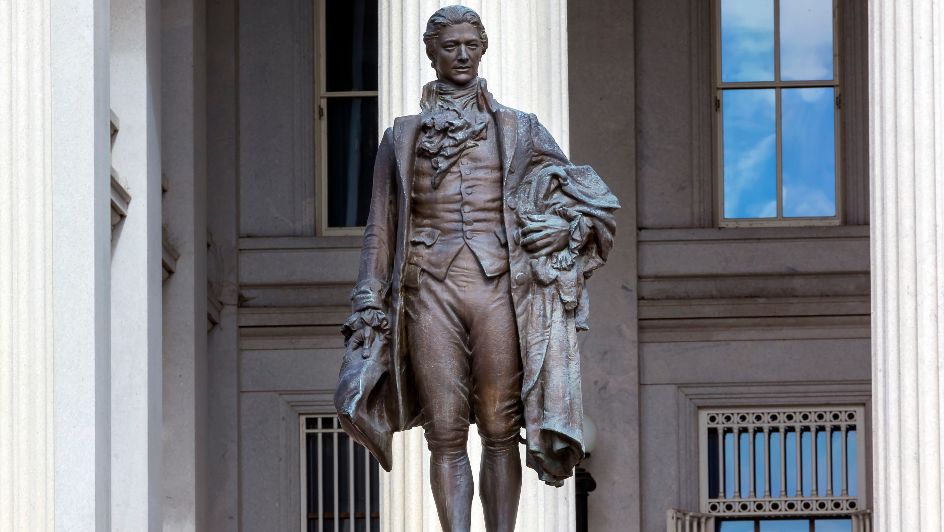#ThrowbackThursday – 11 January

It’s 11 January, and that means it’s time for another edition of Throwback Thursday! Today, we’re taking a look back at three prominent events that went down on this day in history:
1569 – Hear Ye, £5 000 (and Other Goodies) Up for Grabs
The first recorded national lottery in England felt more like a part-lottery, part-raffle affair. After all, with the millions one could potentially win in today’s lotteries, you could buy what that first lottery offered as prizes a hundred times over.
Regardless, this particular lottery – which took place at St Paul’s Cathedral in London on this day in 1569 – offered both a monetary amount AND prizes which, in those days, were quite the substantial haul.
Approved by Queen Elizabeth in 1566 (who was looking to repair her country’s dilapidated harbours, ports and ships without raising taxation), lottery tickets were purchased at ten shillings apiece. Naturally, this was quite a princely sum in those days: as such, members of the nobility who were tempted by the £5 000 jackpot could easily buy the tickets. Of course, their poorer counterparts were able to form syndicates and pool their money to buy tickets as well.
Three years later, on 11 January 1569, the lottery was drawn by Queen Elizabeth herself on the steps of the cathedral. Sadly, the name of the winner who pocketed £5 000 that day is unknown, as are the names of those who won other prizes that included tapestries from the royal collection, silver plates and linen cloth of the highest quality, among other coveted items.
All in all, the biggest winner was the queen: after all, she was able to use the lottery as a three-year, interest-free loan in order to restore glory to England’s maritime institutions.
1755 – A Man Named Alexander Hamilton
Whether or not you’ve watched “Hamilton”, you may or may not know that there was actually a man who inspired the hugely popular 2015 musical.
Alexander Hamilton was, indeed, one of the Founding Fathers of the United States of America. Born on this day in 1755, he rose from humble yet contentious beginnings (born out of wedlock, abandoned by his father, orphaned following his mother’s death, etc) to prominence in his teens.
During his college years, Hamilton was critical of Britain’s implementation of its colonial policies in the USA and was a staunch supporter of the patriots who defied these policies. When he was 20, at the onset of the American Revolutionary War, he joined a volunteer militia company, the Hearts of Oak; a year later, he was commissioned as captain of the Provisional Company of the New York Artillery.
For the next few years, Hamilton showed his mettle and smarts both off the field and on it: he served as an aide-de-camp (with the rank of lieutenant colonel) to General George Washington, and – despite a brief fallout with Washington that saw Hamiltion leaving his staff – took command of three battalions that partook in the successful Siege of Yorktown against the British forces.
After resigning his commission in 1782, Hamilton took on many occupations: a lawyer, an economist and, as a member of President Washington’s cabinet, the US’ first secretary of the treasury (with a brief return to the army as a major general during the 1788-90 Quasi-War against France).
In 1804, Hamiltion died at the age of 47 following a duel with his political rival, Aaron Burr. A gunshot wound at the hands of Burr proved fatal, and he died on 12 July.
Hamilton’s works, including his letters, papers and writings, were well-preserved by his wife, Elizabeth Schuyler – these works later gave rise to his biographies over the years, including the eponymous 2004 bio that directly inspired the musical!
1922 – A Medical Miracle
For the first time in history, a human being received the first injection of insulin that would combat diabetes in the years to come.
In 1921, Dr Frederick Banting (no, he didn’t pioneer the Banting diet, but he did pioneer the following invention) was a 30-year-old Canadian surgeon and medical scientist who, alongside Charles H. Best, J. J. R. Macleod and James Collip, discovered insulin at the University of Toronto in Ontario.
These men realised the therapeutic potential of insulin, especially in the treatment of Type I diabetes, a chronic condition that prevents one’s pancreas from creating insulin, which in turn can raise one’s blood sugar levels to dizzying, debilitating heights. Dogs with diabetes were used in their experimental insulin tests, in which insulin was drawn from the pancreases of healthy dogs and injected into the afflicted animals.
Based on these tests – which also saw them extracting insulin from the pancreases of foetal calves – Banting took it a step further by extracting insulin from the pancreases of adult cattle and refining it for a safer, more effective concoction.
The following year, at Toronto General Hospital on 11 January 1922, Banting was permitted to inject a shot of insulin into Leonard Thompson, a 14-year-old hospital boy who was on the verge of death due to his diabetes.
There are conflicting reports regarding the outcome: some state that Thompson’s incredibly high blood sugar levels dropped significantly to near-normal levels within 24 hours. Others state that the injection contained an impurity, causing an allergic reaction in Thompson. This prompted Banting’s colleague, Collip, to refine the pancreas extract and use it for Thompson’s second injection 12 days later.
Whatever the case may be, it was a scientific breakthrough. Banting and his colleagues were hailed for their efforts, with Banting and Macleod receiving a Nobel Prize in Physiology or Medicine (they also split their prize money with Best and Collip). As for Thompson, he lived on for another 13 years, thanks to his daily use of insulin, before he died from pneumonia at the age of 27.



















